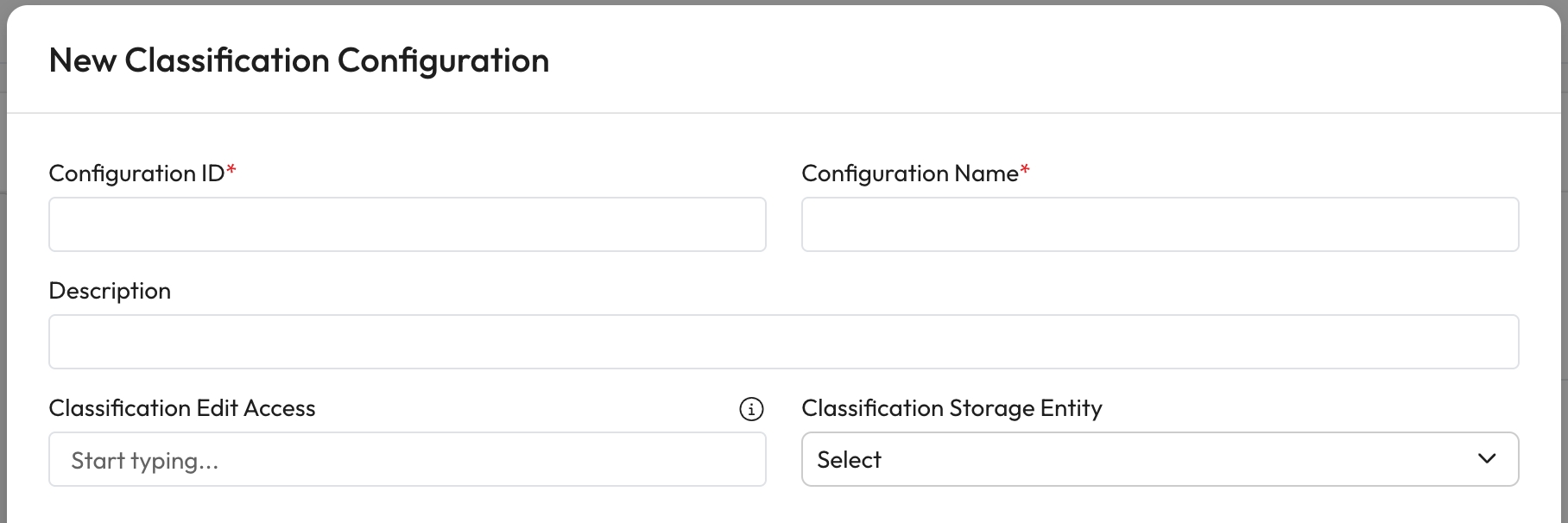Classifications
Classifications are used to give data and documents more detail. The classification tool automatically groups and labels items. It classifies them based on set rules, statistical analysis or a blend of both.
A well-organised repository can reduce the time you spend looking at the wrong thing.
Classify documents to help you stay compliant. For example, contracts can be classified to ensure they are handled correctly.
Classified documents can trigger actions or approvals. For example, invoices are sent straight to the finance team for processing.
New Classification
Select New Classification
This will open the New Classification Configuration modal.
Configuration ID: Enter a unique ID for this classification.
Configuration Name: Enter a user friendly name for this classification.
Description: Enter more information about the classification.
This could be information to help others understand why it's used.
Classification Edit Access: Add users or groups who can edit the classification applied to an item.
This will only allow them to edit items that fall into this classification.
Classification Storage Entity: Choose which entity this classification should be written to.
This allows users to filter results by the classifications.
Select Create.

Editing a classification
You can edit the details of a classification by selecting the relevant classification from the list then Edit. This will open up a modal containing the information you can change.
Deleting a Classification
You can delete a classification by selecting the relevant classification from the list then Delete. Deleting a classification will remove all associated Classes and Class rules.
Any class from this list applied to an existing items will have the class removed immediately.
Displaying Classifications
The order of your classifications determines what class is shown on a result. If an item has multiple classes assigned, the class from the highest classification will be displayed.
Reordering Classifications
Drag and reorder the cards in your classification list to change the priority.
Source specific priorities
If you want a source to prioritise showing classes from one classification you can set a priority in the source config. This setting takes priority over the order of the classifications.
Go to Configurations.
Find the Source you are looking for.
Select edit and go to the General tab.
Priority Classification Configuration: Choose a classification to show over any other from the dropdown.
This ensures if an item in this source has a class from that classification it will be shown in the result.